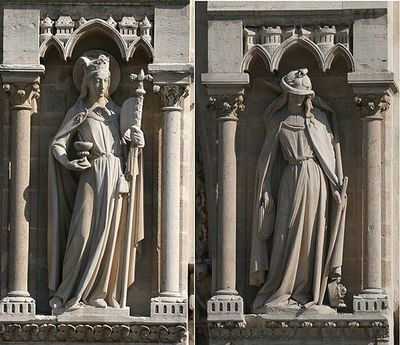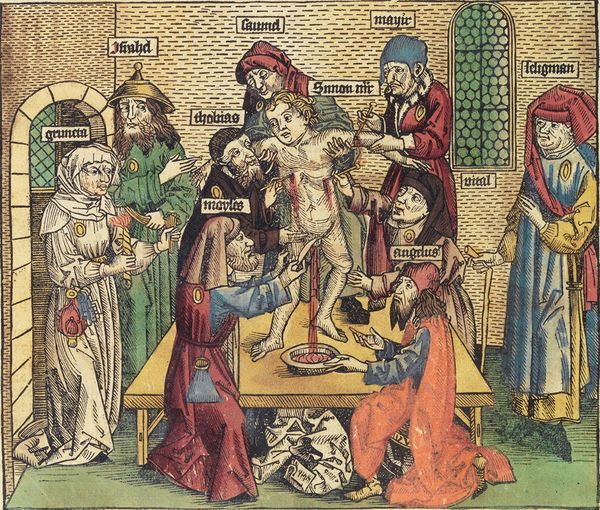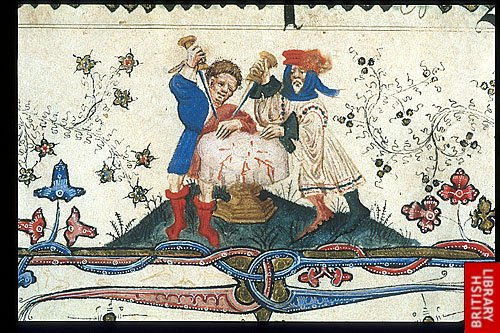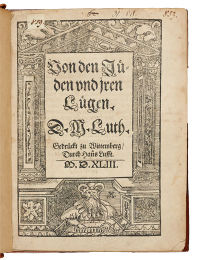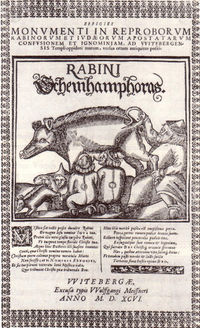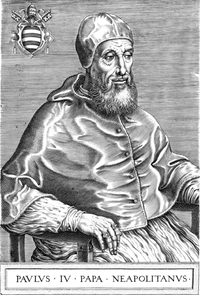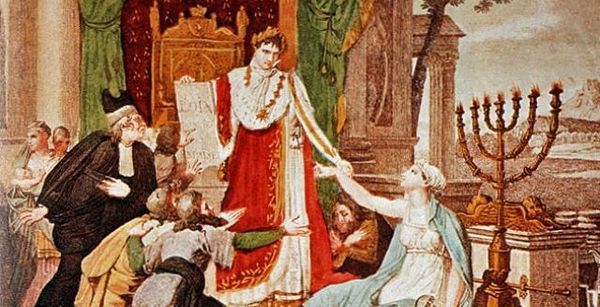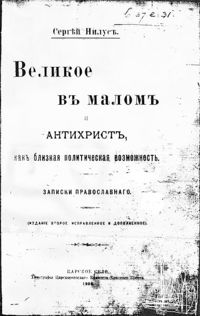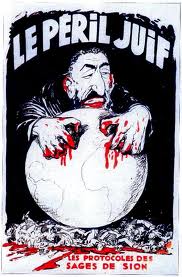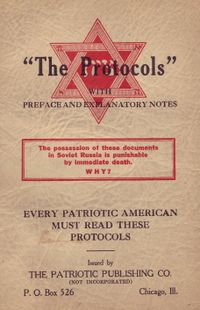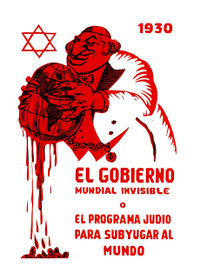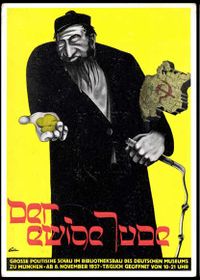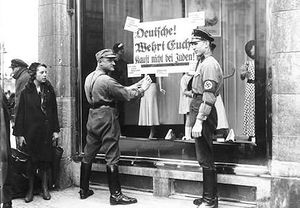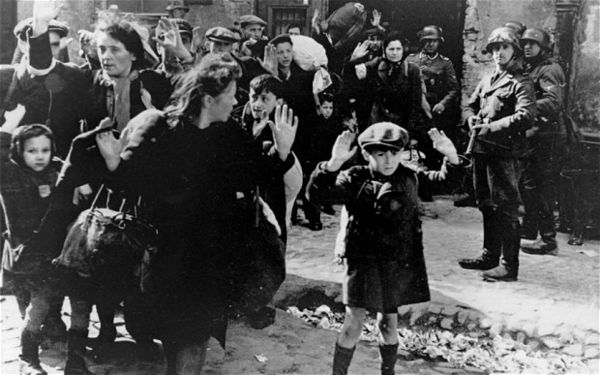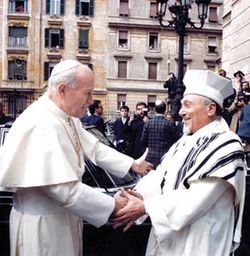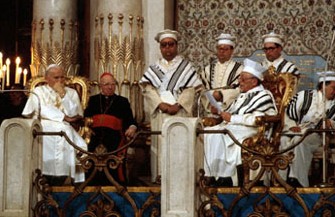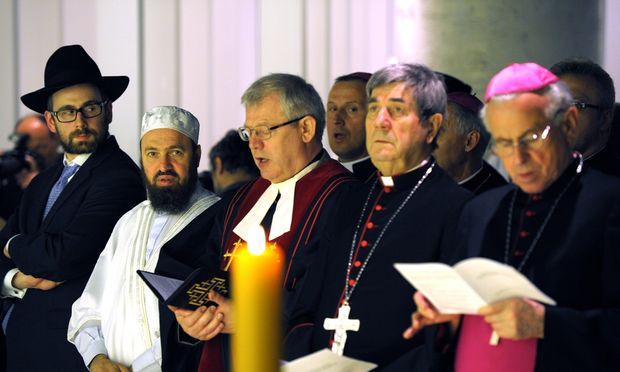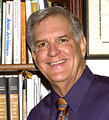Difference between revisions of "Jewish-Christian Relations"
| (5 intermediate revisions by the same user not shown) | |||
| Line 38: | Line 38: | ||
* (b) reference to him as a "bad" Jew ("heretic") or a "non-Jew" | * (b) reference to him as a "bad" Jew ("heretic") or a "non-Jew" | ||
* (c) reference to him as a "good" Jew, whose message was misinterpreted by his disciples. They (most likely Paul, non certainly Jesus) were responsible for creating "Christianity". | * (c) reference to him as a "good" Jew, whose message was misinterpreted by his disciples. They (most likely Paul, non certainly Jesus) were responsible for creating "Christianity". | ||
* (d) a few positive evaluation--Jesus spread monotheism (Maimonides) | |||
In spite of religious confrontation, Christianity rejected any attempts at eliminating the Hebrew Bible from the Christian Scriptures and Jews remained the only non-Christian religious community which was allowed to live within the boundaries of the Roman Empire. | In spite of religious confrontation, Christianity rejected any attempts at eliminating the Hebrew Bible from the Christian Scriptures and Jews remained the only non-Christian religious community which was allowed to live within the boundaries of the Roman Empire. | ||
====Medieval Anti-Judaism==== | ====Medieval Anti-Judaism==== | ||
| Line 55: | Line 55: | ||
As a despised minority Jews were ofter the scapegoats in the face of natural calamities, diseases or social discontent. As a result, thousands of Jews were persecuted, murdered, condemned to the stake: | As a despised minority Jews were ofter the scapegoats in the face of natural calamities, diseases, crime, or social discontent. As a result, thousands of Jews were persecuted, murdered, condemned to the stake: | ||
[[File:Jews stake.jpg|600px]] | [[File:Jews stake.jpg|600px]] | ||
====The Reformation (16th cent.)==== | ====The Reformation (16th cent.)==== | ||
| Line 84: | Line 81: | ||
Only after the French Revolution (1789), Jews obtained civil rights in some parts of Europe and ghettoes were abolished: | Only after the French Revolution (1789), Jews obtained civil rights in some parts of Europe and ghettoes were abolished: | ||
[[File:Napoleon Jews.jpg| | [[File:Napoleon Jews.jpg|600px]] | ||
In countries like England, France, Germany and the United State, Jews contributed to the prosperity of the new liberal societies. | In countries like England, France, Germany and the United State, Jews contributed to the prosperity of the new liberal societies. | ||
| Line 118: | Line 115: | ||
Many Christians were attracted by the idea of an [[Aryan Jesus]]. Hitler sponsored at Jena the activities of the ''Institut zur Erforschung und Beseitigung des jüdischen Einflusses auf das deutsche kirchliche Leben / Institute for the Study and Eradication of Jewish Influence on German Religious Life'' (1939-1945), directed by Walter Grundmann. | Many Christians were attracted by the idea of an [[Aryan Jesus]]. Hitler sponsored at Jena the activities of the ''Institut zur Erforschung und Beseitigung des jüdischen Einflusses auf das deutsche kirchliche Leben / Institute for the Study and Eradication of Jewish Influence on German Religious Life'' (1939-1945), directed by Walter Grundmann. | ||
[[File:Madonna Child Hitler.jpg| | [[File:Madonna Child Hitler.jpg|600px]] | ||
Jewish and Christian scholars and intellectuals struggled to reaffirm the Jewishness of Jesus. | Jewish and Christian scholars and intellectuals struggled to reaffirm the Jewishness of Jesus. | ||
[[File:Crucifixion White Chagall.jpg|thumb| | [[File:Crucifixion White Chagall.jpg|thumb|300px]] | ||
<gallery> | <gallery> | ||
| Line 175: | Line 172: | ||
File:Samuel Sandmel.jpg|[[Samuel Sandmel]] (1911-1979), Jewish-American scholar | File:Samuel Sandmel.jpg|[[Samuel Sandmel]] (1911-1979), Jewish-American scholar | ||
File:Annie Jaubert.jpg|[[Annie Jaubert]] (1912-1980), French scholar | File:Annie Jaubert.jpg|[[Annie Jaubert]] (1912-1980), French scholar | ||
File:David Flusser.jpg|[[David Flusser]] (1917-2000), Jewish-Israeli scholar | |||
File:Krister Stendahl.jpg|[[Krister Stendahl]] (1921-2008), Swedish scholar | File:Krister Stendahl.jpg|[[Krister Stendahl]] (1921-2008), Swedish scholar | ||
</gallery> | </gallery> | ||
Latest revision as of 12:29, 28 November 2018
A sibling rivalry
Christianity was born as a Jewish messianic movement. The first Christians were fully aware of their Jewishness:
- Paul: “Has God rejected his people? By no means!… God has not rejected his people whom he foreknew…If some of the branches were broken off, and you, a wild olive shoot, were grafted in their place to share the rich root of the olive tree, do not boast over the branches… Remember that it is not you that support the root, but the root that supports you” (Rom 11)
After the year 70 and the destruction of the Temple gradually parted from the other forms of Judaism. The Jewishness became a matter of controversy even within the Christian movement. On one hand, we have the Gospel of Matthew:
- “I have come not to abolish the Law and the Prophets… but to fulfill… Whoever breaks one of the least of these commandments and teaches others to do the same, will be called least in the kingdom of heaven” (5:17-20).
On the other hand we have the Letter of Barnabas:
- Some people are wrong “saying that the covenant is both theirs and ours. For it is ours. They (the Jews) permanently lost it…Their covenant was smashed—that the covenant of his beloved, Jesus, might be sealed in our hearts, in the hope brought by faith in him” (4:6-7,10). “They violated [God’s] Law, because an evil angel instructed them...” (9:4).
In the middle we have the Gospel of John who identifies Jesus as a Jew ("How is it that you, a Jew, ask a drink of me, a woman of Samaria?", John 3:9), but singles out the Iudaioi (the "orthodox" Jews of Judea, not all the Jews) as the major enemies of Christ:
- "16 Therefore the Iudaioi started persecuting Jesus, because he was doing such things on the sabbath. 17 But Jesus answered them, "My Father is still working, and I also am working." 18 For this reason the Iudaioi were seeking all the more to kill him, because he was not only breaking the sabbath, but was also calling God his own Father, thereby making himself equal to God. (John 5:6-19).
The parting of the ways between Christianity and Judaism brought about episodes of strong confrontation between the two groups, which led to a mutual estrangement and hatred.
The rise of Anti-Judaism
The rise of Christianity to official religion of the Roman empire in the 4th century unlashed anti-Judaism and changed the balance of power between the two groups. Christians now had the support of the State and could enforce discriminatory laws against the Jews.
In the eyes of the Christians (who no longer saw themselves as "Jews" or members of a Jewish movement, but of a separate religion):
- All Jews were guilty as they had the prophecies but did not recognize the truth
- All Jews were responsible for the persecution and killing of Jesus.
As a reaction to religious and political discrimination, Jews reacted in three ways:
- (a) prohibition even to talk or name Jesus (as if Jesus never existed or were not a Jew)
- (b) reference to him as a "bad" Jew ("heretic") or a "non-Jew"
- (c) reference to him as a "good" Jew, whose message was misinterpreted by his disciples. They (most likely Paul, non certainly Jesus) were responsible for creating "Christianity".
- (d) a few positive evaluation--Jesus spread monotheism (Maimonides)
In spite of religious confrontation, Christianity rejected any attempts at eliminating the Hebrew Bible from the Christian Scriptures and Jews remained the only non-Christian religious community which was allowed to live within the boundaries of the Roman Empire.
Medieval Anti-Judaism
The Middle Ages saw the spreading of malicious prejudices against the Jews. They were falsely accused of kidnapping Christian children for bloody sacrifices (Blood Libel).
They were falsely accused of acting against the symbols of Christianity (Host Desecration).
As a despised minority Jews were ofter the scapegoats in the face of natural calamities, diseases, crime, or social discontent. As a result, thousands of Jews were persecuted, murdered, condemned to the stake:
The Reformation (16th cent.)
At the beginning Martin Luther had a more positive attitude toward Jews. He recognized the Jewishness of Jesus and looked with favor to the ancient Jewish tradition, promoting the study and reading of the Old Testament in its original Hebrew language.
While he praised "ancient" Jews, he was puzzled however by the "refusal" of "contemporary" Jews to accept Jesus as the foretold Messiah, which he perceived as a deliberate act of obstinacy. In 1543 he published an Antisemitic pamphlet, On the Jews and Their Lies, in which he says that the Jews are a "base, whoring people, that is, no people of God, and their boast of lineage, circumcision, and law must be accounted as filth." They are full of the "devil's feces ... which they wallow in like swine." The synagogue was a "defiled bride, yes, an incorrigible whore and an evil slut ..." He argues that their synagogues and schools be set on fire, their prayer books destroyed, rabbis forbidden to preach, homes razed, and property and money confiscated. They should be shown no mercy or kindness, afforded no legal protection, and these "poisonous envenomed worms" should be drafted into forced labor or expelled for all time. He also seems to advocate their murder, writing "[w]e are at fault in not slaying them". A few months later, Luther wrote another antisemitic pamphlet (Vom Schem Hamphoras), in which he again argued that the Jews were no longer the chosen people but "the devil's people". Luther's writings would be used extensively by the Nazis.
The Ghettoes
In 1555, Pope Paul IV issued papal bull “Cum nimis absurdum which created the Ghettoes, city quarters where the Jews were forced to live, segregated from the rest of the population.
In spite of any tension, some Christian scholars began using Jewish sources to understand the background of Jesus and his movement. Jesus was not recognized as "Jewish" but it was acknowledged that he lived and preached in a "Jewish" setting.
The Emancipation (19th cent.)
Only after the French Revolution (1789), Jews obtained civil rights in some parts of Europe and ghettoes were abolished:
In countries like England, France, Germany and the United State, Jews contributed to the prosperity of the new liberal societies.
A strong Reform movement arose in Europe and the United States, challenging the traditional foundations of the rabbinic tradition and calling for a closer integration of Jews in "modern" societies. Reform Jewish Scholars celebrated Jesus the Jew as an example of free thinking and liberty for the burden of traditional ideas, almost as a precursor of "Reform Judaism."
Abraham Geiger (1810-1874), Jewish-German scholar
Heinrich Hirsch Graetz (1817-1891), Jewish-German scholar
Isaac Mayer Wise (1819-1900), American-Jewish scholar
Maurycy Gottlieb (1856-1879), Jewish-Polish artist
Claude G. Montefiore (1858-1938), Jewish-British scholar
Joseph Klausner (1874-1958), Jewish-Israeli scholar
The first Society of Christians and Jews was established at London in 1929. Many Christian scholars also began to look at Jesus as a "Jew".
James Tissot (1836-1902), French artist
George F. Moore (1851-1931), American scholar
The rise of racial Antisemitism (20th cent.)
The worst however had yet to come. Anti-Semitism spread throughout Europe in the 19th century. In 1903 an anonymous pamphlet, The Protocols of the Elders of Zion, falsely accused the Jews of plotting for world domination. This antisemitic hoax was first published in Russia, but was soon translated in all major languages and circulated throughout the world, including the United States, where Henry Ford funded printing of 500,000 copies in the 1920s.
Antisemitism led in the 1930s to the emanation of racial laws against the Jews by Fascist regimes in many European states, notably, Germany and Italy. Jews were commonly excluded by many Universities and social clubs even in democratic countries like the United States.
Many Christians were attracted by the idea of an Aryan Jesus. Hitler sponsored at Jena the activities of the Institut zur Erforschung und Beseitigung des jüdischen Einflusses auf das deutsche kirchliche Leben / Institute for the Study and Eradication of Jewish Influence on German Religious Life (1939-1945), directed by Walter Grundmann.
Jewish and Christian scholars and intellectuals struggled to reaffirm the Jewishness of Jesus.
Edmond A. Fleg (1874-1963), Jewish-French novelist
Sholem Asch (1880-1957), Jewish-Polish novelist
Marc Chagall (1887-1985), Jewish-Russian artist
James Parkes (1896-1981), British scholar
The Holocaust
During the Holocaust, 6,000,000 Jews were murdered:
The Conference at Seelisberg, Switzerland (July 30 - August 5, 1947)
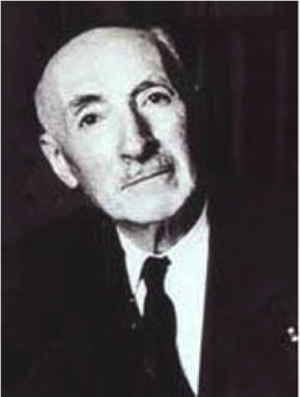
The Conference, organized by the International Council of Christians and Jews (ICCJ), was composed of 63 participants and 2 observers from twelve nations, comprising Jews and Christians (both Protestant and Roman Catholic, both clergy and laity).
- 1. Remember that One God speaks to us all through the Old and the New Testaments.
- 2. Remember that Jesus was born of a Jewish mother of the seed of David and the people of Israel, and that His everlasting love and forgiveness embraces His own people and the whole world.
- 3. Remember that the first disciples, the apostles and the first martyrs were Jews.
- 4. Remember that the fundamental commandment of Christianity, to love God and one's neighbor, proclaimed already in the Old Testament and confirmed by Jesus, is binding upon both Christians and Jews in all human relationships, without any exception.
- 5. Avoid distorting or misrepresenting biblical or post-biblical Judaism with the object of extolling Christianity.
- 6. Avoid using the word Jews in the exclusive sense of the enemies of Jesus, and the words "the enemies of Jesus" to designate the whole Jewish people.
- 7. Avoid presenting the Passion in such a way as to bring the odium of the killing of Jesus upon all Jews or upon Jews alone. It was only a section of the Jews in Jerusalem who demanded the death of Jesus, and the Christian message has always been that it was the sins of mankind which were exemplified by those Jews and the sins in which all men share that brought Christ to the Cross.
- 8. Avoid referring to the scriptural curses, or the cry of a raging mob: "His blood be upon us and our children," without remembering that this cry should not count against the infinitely more weighty words of our Lord: "Father forgive them for they know not what they do."
- 9. Avoid promoting the superstitious notion that the Jewish people are reprobate, accursed, reserved for a destiny of suffering.
- 10. Avoid speaking of the Jews as if the first members of the Church had not been Jews.
The Beginnings of the Christian-Jewish dialogue
Samuel Sandmel (1911-1979), Jewish-American scholar
Annie Jaubert (1912-1980), French scholar
David Flusser (1917-2000), Jewish-Israeli scholar
Krister Stendahl (1921-2008), Swedish scholar
The discovery of the Dead Sea Scrolls in 1947 shed light on the diversity of Second Temple Judaism and on the similarity of early Christianity with other dissident Jewish groups of the time.
Relations between Jews and Christian radically improved.
In the Vatican II, a document, called Nostra Aetate (1965), was approved by the Catholic Church, condemning antisemitism and calling for a relations between Christians and Jews based on mutual respect and friendship.
- "Sounding the depths of the mystery which is the Church, this sacred Council remembers the spiritual ties which link the people of the New Covenant to the stock of Abraham. Indeed the Church reproves every form of persecution against whomsoever it may be directed. Remembering, then, her common heritage with the Jews and moved not by any political consideration, but solely by the religious motivation of Christian charity, she deplores all hatreds, persecutions, displays of antisemitism leveled at any time or from any source against the Jews."
In 1986 Pope John Paul II was the first Pope ever to visit a synagogue.
Today It has become common to see Christian, Jewish and Muslim leaders praying together and taking part in common celebrations.
In this new climate, a group of Jewish scholars has been actively engaged in the research on the Historical Jesus, along with their non-Jewish colleagues
Geza Vermes (1924-2013), Jewish-Hungarian scholar
Paula Fredriksen, Jewish-American scholar
Amy-Jill Levine, Jewish-American scholar
Daniel Boyarin, Jewish-American scholar

